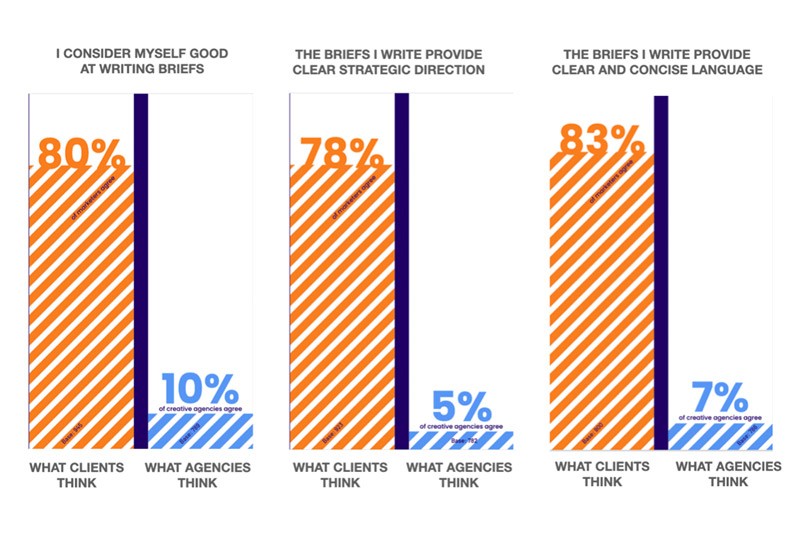Having spent the first half of my career in the advertising agency arena, you’d hope that using that experience to better develop agency relationships and generate better creative work once on the client side, would be achievable.
According to colleagues of mine when I headed up Mars Petcare marketing firstly in Asia, then Australia, that is exactly what they felt was achieved. So, I thought it might be interesting to share my experience and approach.
So, what are five ways a Client can get better relationships and work from their Agencies?
1. Clear briefing with clear expectations
It’s really important to spend the time getting this right and ensuring the agency has really understood what you’re asking them to do. When working across Asia this was especially important given language and cultural differences across the various countries and teams involved.
Do you have a standard briefing procedure in place or are you letting your teams ‘do their own thing’? The short answer is don’t let that happen as there should only be one briefing approach, one brand definition, etc too.
Patience is very important to ensure everyone gets on the same page between the agency and client teams in the different markets, then communicate, communicate, communicate.
Get the agencies to share what/how they plan to brief internally if possible as this will prove their understanding of what you’ve briefed to them.
2. Treat them as your partner, not a supplier
This links to the above point at one level, but beyond that, it’s very important that the agency team feels comfortable with the client team, where you build genuine rapport.
A challenging aspect of Asia is the tendency of clients to treat agency personnel often quite poorly, with very little respect for making them work through the night/over weekends, etc. This is often driven by poor systems and behaviours within the client where the agency gets screwed at the end of the day.
This is not going to create a strong working relationship at all, remember you are spending a lot of time and money with your selected agency and they are critical to your organisation achieving its growth agenda.
With the growth in importance of commercial/procurement, are marketing doing enough to ensure the agency is treated fairly through the commercial/contract process/t’s and c’s, etc? You’re hopefully working hard to get the best relationship and output so you don’t want another division/team messing that up for you, do you?
3. Have regular informal reviews together
I’m sure your agency contractual t’s and c’s will have KPI’s in place and the review process that goes with it. I’m talking about having regular ‘informal’ get-togethers to review what’s working, what’s not, where team dynamics could be better, where any individuals are flying solo to the agreed ways of working.
The more the agency knows they can have frank and open discussions, the more productive the relationship will become, the more the agency will push internally too for the best resources and the more the best people will be drawn to work with you too.
Go in the opposite direction becoming the client the agency dreads, just works with you for the money, the more you will struggle to get the best people working on your business in the most collaborative manner. You will just have a contractual arrangement without the passion and commitment that leads to truly outstanding relationships and the work that follows.
4. Make agencies visible to the organisation
You’re spending a lot of time hopefully nurturing your agency relationship to get the best output from the agency. You should want to show that to the rest of the management team so they also see what you’ve achieved and what you’re setting your sights on. You should show with pride the work that’s produced and share it with all employees so they can share in the pride the marketing team feel too.
By showing and sharing the partnership you’ve built with your agency it’ll show why this should be nurtured, protected and valued. Procurement won’t be focusing on driving this into the ground, but discussing with you how quality and value can be taken to higher levels… not insisting on starting again with a pre-ordained pitch process that throws all your great work out the window and where you take two or three steps backwards from where you are!
5. Manage budget to motivate agencies as well as deliver growth expectations
In Asia I found that the Mars ad spend was pretty much divided equally across brands in each market, utilising the global agency roster in each market too. The problem was that this spend approach made no sense in terms of effective brand support and the spend-by-agency in each market was too low to motivate. The agencies were supporting the client because their HQ said they had to!
Priorities for brand spend were set by the lead brand regionally/locally and support cut from the ‘non-strategic’ brands. The ad spend was focused behind the strongest lead agency in a market to enable quality support and fees for that support.
As the lead brand approach led to revenue growth over the medium term, more brands and agencies could be brought in to the picture, as made sense. The agencies were happy and motivated by this common-sense approach.
In Australia, the business and petcare category was already well developed.
Let’s face it though, business at the best of times can be volatile and marketing spend would often be targeted when profit was at risk. I’ve been on the receiving end of ad spend/agency income cuts that can be very worrying to agency management, impacting both profit levels and staffing levels.
So, to neutralise, or at worst, minimise that impact, we only revealed approximately 70% of the year’s ad spend. The remaining 30% ad spend would be gradually added into the second half-year brand activities in two ways, as sales and profit were ‘on plan’ and spend $’s safe to release. Either of which would be a windfall to the agencies, making the Mars team heroes internally.
One way was to extend support for already scheduled brand activities, the second was to make it known to the agencies that there was a discretionary budget available to support stellar creative brand initiatives.
To give you an idea of what was achieved by the latter, one agency came up with an amazingly successful PR campaign for the Whiskas brand where a famous Australian rules football player (Gary Hocking of the Geelong Cats), changed his name by deed poll to Whiskas, for a month.
So, each time he was on the playing field, usually televised too, he’d be referred to as Whiskas. He got a fair bit of teasing from opposition players, as you can imagine, but $100k spend returned well over $1 Million in really fun awareness/coverage for the Whiskas brand, including the front page of the Herald Sun newspaper, which is absolutely priceless.
A final thought…
I hope this gives you some food for thought about how you can take your agency relationship to the next level and get great work that involves the kind of struggle to achieve that has you jumping out of bed with absolute enthusiasm, every time you know you have a meeting with your agency.
If you need help getting to grips with how to plan to achieve this type of relationship ….just remember….help is at hand if you need us!
Our Relationship Performance Evaluation service measures collaboration and alignment between marketing team agencies to maximise your collaborative output. Learn more here




